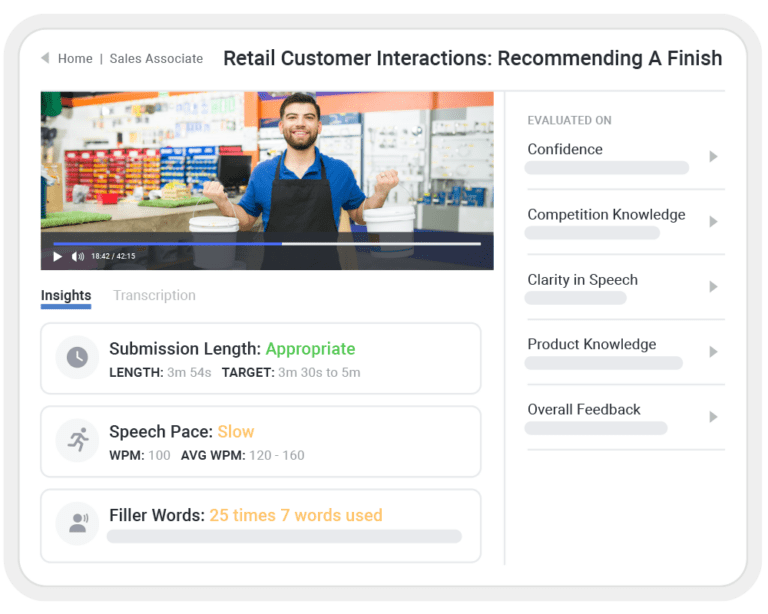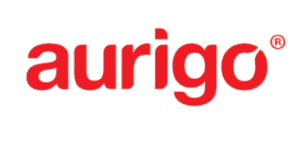What is the Difference Between Training and Development?
![]() Poornima Mohandas
on
October 21, 2024
Poornima Mohandas
on
October 21, 2024
The life of a B2B sales rep isn’t easy. Sellers must consistently meet buyers’ lofty expectations – which gets complicated when products, markets, competitors, and customer preferences are constantly in flux.
It’s no wonder why less than half of B2B sales reps make quota.
Sales training and development equip sellers to overcome challenges and effectively engage buyers. Every sales rep—from your top performers to your newbies—needs workplace training and development to be successful.
But what is training and development?
Training and development are two words we hear a lot. Yet, there’s a lot of confusion about how sales training and development are similar, how they’re different, and why each is important to the success of a revenue organization. In this post, we’ll clear up that confusion.
What is training and development?
First things first: what is training and development?
While these two words are often used interchangeably, but they’re different. Let’s start by defining both training and development.
What is training?
In sales, training teaches sellers the skills and information they need to perform their jobs. In other words, sales training is focused on ensuring sellers have what they need to do their jobs well.
Often, organizations take a structured approach to learning. For example, new sellers may be required to complete sales onboarding to ensure they’re up to speed and understand the skills and knowledge they’ll need in their new role.
Sales training programs can be delivered to a larger group of people—like a specific team or a group of new hires—or to individual sellers. For example, a seller may undergo additional sales training on objection handling if this is an area where they struggle.
What is development?
Every seller has unique skills and knowledge. Development is a practice focused on building off existing skills and knowledge.
Effective development empowers sellers to improve and grow. Of course, this growth enables them to be more effective in their current role. It can also prepare them to take the next step in their career path within the organization.
For example, a sales rep may focus on developing their leadership skills so they can apply for a sales manager job within the next year.
What is the difference between training and development?
The definitions we shared for training and development make it clear that these concepts are related, but they’re not synonymous.
So, what’s the difference between training and development?
The best way to answer that question is to examine the key factors that distinguish these two practices. We’ll also examine training and development examples to clarify the differences further.
Factor #1: Focus
Sales training focuses on providing employees with the skills and knowledge they need to excel in the role they were hired for.
Development is focused on growing capabilities so employees can improve their performance in their current roles and potentially explore more advanced roles within the organization.
Factor #2: Objectives
Sales training empowers employees to grow the skills and competencies necessary for success in their current roles. Development aims to strengthen an employee’s capabilities and unlock advancement opportunities.
Factor #3: Audience
Sales training programs are typically created and delivered to a specific group. For example, new hires must complete a training program. Or, sellers in certain roles may be required to complete a role-specific sales training program.
On the other hand, development is tailored for each employee. Each seller has a unique background, set of skills, and goals. Development opportunities are tailored to address the needs of each employee.
Factor #4: Timing
Training is typically time-bound. For example, new sellers may undergo onboarding within 90 days of joining the company. Or, all sellers may be required to complete training before a new product launch or when a new CRM is rolled out.
Development, on the other hand, is typically a long-term process. For example, a sales rep may express interest in moving into a managerial role and seek out relevant development opportunities over the next two years.
Factor #5: Tactics
Workplace training and development employ different tactics.
Onboarding is one type of training. However the best revenue organizations also deliver ongoing training to ensure sellers have up-to-date knowledge and opportunities to learn key skills.
Some examples of training topics include:
- Company training
- Product training
- Industry training
- Sales technique training
- Technology training (ie when onboarding a new CRM)
Some examples of development include:
- Career path discussions
- Mentoring
- Job shadowing
- Performance reviews
- Networking at industry events
Factor #6: Who takes the lead
The employer typically leads training. For example, sales enablement teams may lead new sales rep training with support from other teams, including HR, sales, marketing, and sales operations.
In development, sellers take a more active role. They must take the initiative to set goals, communicate them to their manager, and identify opportunities to grow their skills to improve performance in their current role and be prepared to step into the next one.
Factor #7: Measurement
Training is measured by knowledge and skills mastery – and determining how that mastery impacts job performance. For example, quizzes and tests can gauge a rep’s mastery of new material. Role-play and sales call recording scores can measure a rep’s mastery of skills and behaviors. Sales certification programs can help gauge a seller’s readiness.

Organizations must also determine how mastery of key knowledge and behaviors correlates with job performance. For example, does a sales rep close more deals after mastering their objection-handling skills?
On the other hand, development is measured by examining a seller’s long-term growth and career progression within the organization. For example, an organization can gauge how an employee’s performance has improved over time and how many promotions they’ve earned within a certain time period.
Factor #8: How a revenue enablement platform is used
A revenue enablement platform is an important training and development tool. But the way the tool is used varies.
A revenue enablement platform can deliver onboarding and ongoing training to ensure sellers have the right skills and knowledge for their roles. The right tool can help you measure sellers’ mastery of knowledge and skills and how that mastery correlates with sales outcomes.
A revenue enablement platform is also a powerful tool for development initiatives. One way a platform can be used for development is to deliver personalized coaching to help sellers grow their skills and competencies. Sales leaders can also use the revenue enablement platform to track a sales rep’s growth over time.
| Training | Development | |
|---|---|---|
| Focus area | Equip reps with the skills and knowledge they need for the role they were hired for | Build upon existing skills and competencies to improve job performance and prepare sellers for future growth opportunities |
| Objectives | Build new skills and competencies | Enhance existing skills and competencies |
| Audience | Specific groups or teams, such as new hires or sellers in a specific role | Tailored to the individual |
| Timing | Short-term and time bound | Ongoing |
| Examples of tactics |
|
|
| Who leads the charge? | Employer, including sales enablement teams, HR, and sales trainers | Employee |
| Measurement | Mastery of knowledge, which can be measured via quizzes and assessments. Mastery of skills, which can be measured through role-play, call scores, and sales performance. | Improvements in job performance. Internal career advancement |
| How a revenue enablement platform is used |
|
|
Why is training and development important for revenue organizations?
We’ve now answered the questions “what is training and development?” And, we’ve explored the similarities and differences of these two practices.
So, when it comes to training and development, which is the better option? The truth is revenue organizations need both.
There are a few key reasons why workplace training and development are both important for revenue organizations.
Training and development helps reps ramp faster
The sooner new reps are ramped up, the sooner they can start contributing to revenue growth. With a strong training program, your sellers will be ready to hit the ground running—faster.
For example, MongoDB has reduced ramp time by 45% by revamping the way it onboards new customer-facing roles. This means that sellers can get out in the field and start selling faster.

Aurigo is another company that has seen big benefits from optimized sales training. The company created structured onboarding and sales enablement processes for reps using Mindtickle, and as a result, they’ve reduced the average number of days to the first opportunity from 25 days to 16 days.

Training and development boosts job performance
When sellers have the right skills and knowledge (and opportunities to level up their existing skills and knowledge) they’re better equipped to perform in their roles. Your go-to-market teams will have what it takes to win and retain more customers. And that means your revenue will grow.
For example, Trimble Viewpoint, a software solution provider for the construction industry, finds that sellers engaged with training via the Mindtickle platform are 50% more likely to exceed quota.
In addition, Juniper Networks revamped its training and development programs, contributing to 47% year-over-year sales growth.
Training and development programs increase employee satisfaction and retention
When employees are dissatisfied at work, they’re likely to jump ship. That means you’ll have to spend time and effort filling vacant roles.
On the other hand, when you provide your teams with training, development, and career growth opportunities, their satisfaction will grow. Happy employees are more likely to perform well – and stick around long-term.
When employees are dissatisfied at work, they’re likely to jump ship. That means you’ll have to spend time and effort filling vacant roles.
On the other hand, when you provide your teams with training, development, and career growth opportunities, their satisfaction will grow. Happy employees are more likely to perform well – and stick around long-term.
A LinkedIn report states eight in 10 people say learning adds purpose to their work. The report also found that organizations with strong learning cultures see significantly higher employee retention rates.
Deliver effective training and development at scale with Mindtickle
Training and development are both key to the success of any go-to-market team. Now’s the time to build a culture of learning at your organization.
If you’re looking to deliver effective training and development that improves seller performance and retention, Mindtickle can help.
With Mindtickle’s all-in-one revenue enablement platform, you can deliver winning onboarding programs that set new sales reps up for success at your organization. You can also deliver ongoing sales training, enablement, and learning paths personalized to each seller’s needs – wherever they are on their career path. Your sellers will master the skills and competencies they need to close more deals faster. And that means your revenue will grow.
Mindtickle also features AI-powered role-plays, enabling new and veteran sellers to develop and perfect key skills. Sellers engage with an AI bot in a realistic sales scenario and get real-time coaching to improve their performance before money is on the line.
Sales training in Mindtickle
Ready to see how Mindtickle can help you build a learning culture and deliver personalized training and development that prepares sellers to crush quota
Get Your Demo

